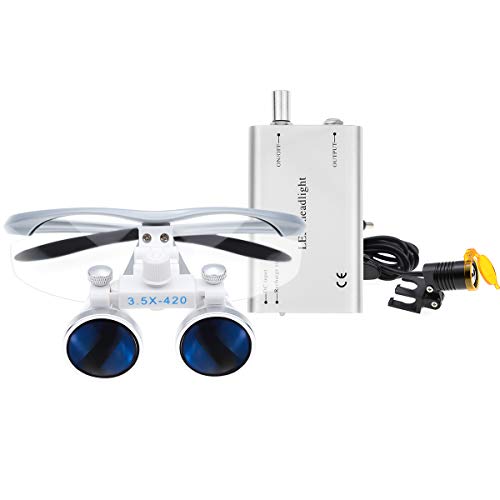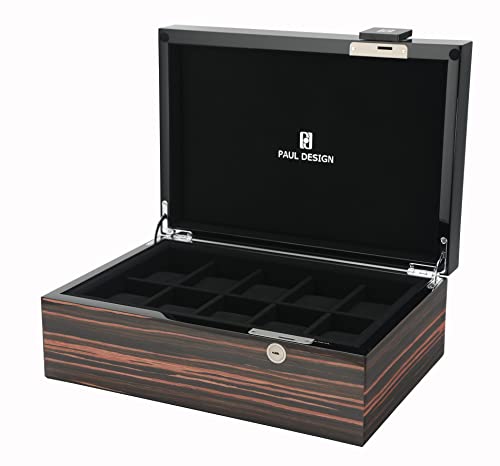This step-by-step guide helps readers differentiate between authentic Swiss watches and replicas. It provides clear instructions on identifying the key features and characteristics that are unique to genuine Swiss watches. By following these steps, readers will be able to confidently determine the authenticity of a Swiss watch and avoid purchasing a replica.
Timeless elegance at its finest
Research reputable brands
Research reputable brands
Before starting the identification process, follow these steps to familiarize yourself with reputable Swiss watch brands:
- Do your homework: Research well-known brands such as Rolex, Omega, Patek Philippe, and TAG Heuer.
- Explore designs: Study their various designs, including classic, sporty, and luxurious styles, to get an idea of what appeals to you.
- Examine craftsmanship: Look into the craftsmanship and attention to detail that these brands are known for, which often involves high-quality materials and precision engineering.
- Identify unique features: Pay attention to the unique features and functionalities offered by each brand, such as waterproofing, chronograph functions, or innovative materials.
- Compare pricing: Compare the prices of watches from these reputable brands to understand their range and determine what suits your budget.
By thoroughly researching reputable Swiss watch brands, you will be equipped with valuable knowledge to make informed decisions and identify genuine timepieces.
Examine the watch movement
- Identify the watch brand and model: Begin by identifying the brand and model of the watch you are inspecting. This information will help you understand the type of movement to expect, as different brands often use specific movement technologies.
- Locate the back case: Turn the watch over and locate the back case. This may typically be accessed by unscrewing or sliding off a small cover on the back of the watch. If you are unsure how to open the back case, consult the manufacturer’s instructions or visit an authorized dealer for assistance.
- Inspect the movement: Once the back case is open, carefully examine the watch movement. Look for a smooth, precise motion of the hands, indicating a high-quality movement. For mechanical watches, observe the intricate, finely crafted gears and components that create the mesmerizing ticking motion. Quartz watches, on the other hand, should have a smoothly gliding second hand without any jumpy or jerky movements.
- Seek expert assistance if needed: If you are unsure about the authenticity or quality of the watch movement, it is advisable to seek the assistance of an authorized dealer or watch expert. They can provide expert advice and help you determine if the movement is genuine and up to standard.
By following these steps, you can thoroughly examine the watch movement to ensure that it meets the standards you expect from an authentic Swiss watch.
Check for Swiss-made label
- Look for a label on the dial or case back of the watch.
- The label should read ‘Swiss-made’.
- Ensure that the watch was manufactured in Switzerland and meets specific quality standards set by Swiss law.
Inspect the craftsmanship
Inspect the craftsmanship of the watch by examining its fine details. Look closely at the hour markers, hands, and engravings to ensure precision and attention to detail. Pay special attention to the quality of materials used, such as the case, bracelet, and clasp, to gauge the authenticity and durability of the watch.
Verify the serial and model numbers
- Locate the serial and model numbers: Every authentic Swiss watch will have a unique serial number and model number. Look for these numbers on the back of the watch, usually engraved or stamped on the case.
- Contact the manufacturer or authorized dealer: Reach out to the watch manufacturer or an authorized dealer to verify the legitimacy of the watch. You can find their contact information on their official website or through a reliable source.
- Provide the numbers for verification: Once you have the contact information, provide them with the serial and model numbers of the watch. This will allow them to check against their database and confirm if the watch is genuine and matches the specific model.
- Follow their instructions: The manufacturer or authorized dealer will guide you on the next steps to take based on their verification process. They may request additional information or even ask to examine the watch physically.
By following these steps, you can ensure that the serial and model numbers of your Swiss watch are authentic and match the specific model, providing you with peace of mind and confidence in your purchase.
Evaluate the weight and materials
Evaluate the weight and materials
Step 1: To determine the authenticity of a Swiss watch, compare its weight with that of a known genuine model. Hold both watches in your hands and take note of the weight difference.
Step 2: Authentic Swiss watches are typically made with high-quality materials, such as stainless steel, gold, or platinum. Examine the materials used in the watch’s construction. Check for any signs of cheap or inferior materials such as plastic or low-grade metals.
Step 3: To further ensure the watch feels substantial and well-crafted, pay attention to its weight distribution. A genuine Swiss watch will have a balanced weight distribution, with no excessive heaviness or lightness in any area. Compare the weight distribution of the watch you are evaluating with a known genuine model to make a fair assessment.
Example: For instance, an example of an authentic Swiss watch made with high-quality materials is the Rolex Submariner. It is constructed with stainless steel and has a weight of around 155 grams. By comparing the weight and materials of your evaluated watch with that of the Rolex Submariner, you can gauge its authenticity.
Remember, assessing the weight and materials of a Swiss watch is essential in determining its authenticity. Following these steps and comparing with known genuine models will help you make an informed decision.
Authenticate the brand's signature features
Research the specific brand’s characteristics and compare them with the watch you are examining. Study unique design elements, logos, or patented features associated with reputable Swiss watch brands. Analyze if these signature features are present in the watch you are authenticating.
Consult an expert if in doubt
- Research the credibility and expertise of an expert or authorized dealer in Swiss watches.
- Contact the chosen expert or authorized dealer and provide them with detailed information about the watch.
- Schedule an appointment or arrange a meeting to have the watch examined by the expert or authorized dealer in person.
- Communicate any doubts or concerns you have about the authenticity of the watch to the expert.
- Follow the guidance and recommendations provided by the expert or authorized dealer regarding the authenticity and value of the Swiss watch.
Key takeaways
In conclusion, being able to distinguish an authentic Swiss watch from a replica is crucial for watch enthusiasts and collectors. By taking the time to research, analyze key features, and seek guidance from experts, readers can trust their judgment and make educated purchases. It is worth putting in the effort to ensure that the timepiece one owns is the real deal, as the authenticity adds both value and a sense of pride. Don’t let replicas deceive you – with the knowledge gained from this guide, you can confidently make smart choices when it comes to buying Swiss watches.
Spotting Counterfeit Watches
Identifying Counterfeit Rolex Watches in 2023: A Guide
Navigating Your Swiss Timepiece
- Familiarize yourself with the different types of Swiss watches available, such as mechanical, quartz, and automatic, to understand the differences in functionality and craftsmanship
- Learn how to properly wind a mechanical Swiss watch by turning the crown in a clockwise direction until you feel resistance, and avoid over-winding as it can damage the mechanism
- Set the time and date on the watch by pulling the crown out to the appropriate position and rotating it accordingly. Refer to the watch’s manual for specific instructions, as the process may vary depending on the model
- Make sure to protect your Swiss watch from water damage if it is not water-resistant. Avoid submerging it in water or wearing it during activities like swimming or showering
- Get familiar with the maintenance and servicing requirements of your Swiss watch. Regularly clean the case and bracelet using a soft cloth, and consider getting it professionally serviced every 3-5 years to ensure optimal performance
Frequently Asked Questions about Swiss Watches
Are all Swiss watches handcrafted or do some brands use automation in their manufacturing process?
Not all Swiss watches are handcrafted. While craftsmanship has traditionally been a significant aspect of Swiss watchmaking, many modern brands now incorporate automation in their manufacturing processes. Automation enables the production of watches on a larger scale, ensuring consistent quality and efficiency. However, certain high-end luxury brands still prioritize traditional handcrafting methods for their watches, valuing the meticulous attention to detail and artisanal craftsmanship. Ultimately, it depends on the brand and the target market of the watches.
How can one spot a counterfeit Swiss watch and ensure the authenticity of their purchase?
Spotting a counterfeit Swiss watch and ensuring the authenticity of a purchase can be accomplished through various ways. Here are some key methods to consider:
- Authorized Dealers: Buy your Swiss watch from an authorized dealer or retailer. They have the authorization and direct relationship with the brand, guaranteeing the authenticity of the timepiece.
- Price: If the price seems unusually low compared to the market value of the specific Swiss watch model, this could be an indicator of a counterfeit. Authentic Swiss watches are generally expensive due to their high-quality craftsmanship and materials.
- Serial Numbers and Documentation: Check for serial numbers on the watch and ensure they correspond to the brand’s records. All authorized Swiss watches are provided with unique identification numbers or codes. Additionally, ensure the watch comes with original documentation, including certificates, warranties, and manuals.
- Brand Logos, Engravings, and Hallmarks: Examine the watch for any spelling mistakes, rough edges, or inconsistent branding. Authentic Swiss watches have precise engravings, clear logos, and hallmarks indicating the brand’s quality standards.
- Movement: Swiss watches are renowned for their mechanical movement. Counterfeit watches often utilize quartz movements or poor-quality imitations. Research the specific model’s movement and verify if it aligns with the official information provided by the brand.
- Weight and Materials: Counterfeit watches may feel comparatively lighter or inferior in quality. Genuine Swiss watches are crafted with high-quality metals, crystals, and other materials, which contribute to their weight and durability.
- Expert Examination: If you are uncertain about a Swiss watch’s authenticity, seek advice from reputable experts or watch professionals who can examine the timepiece thoroughly. They can often spot details that are difficult for laypersons to identify.
- Brand’s Official Website: Visit the official website of the Swiss watch brand and familiarize yourself with their collections, models, and specific details. This will help you to compare and identify any discrepancies between the genuine watch and a potential counterfeit.










